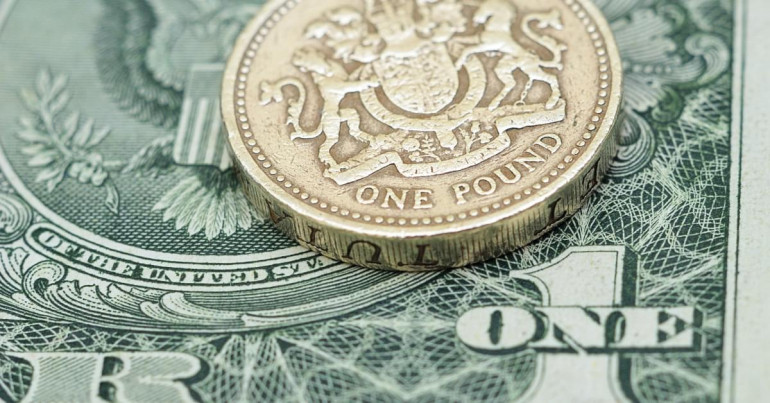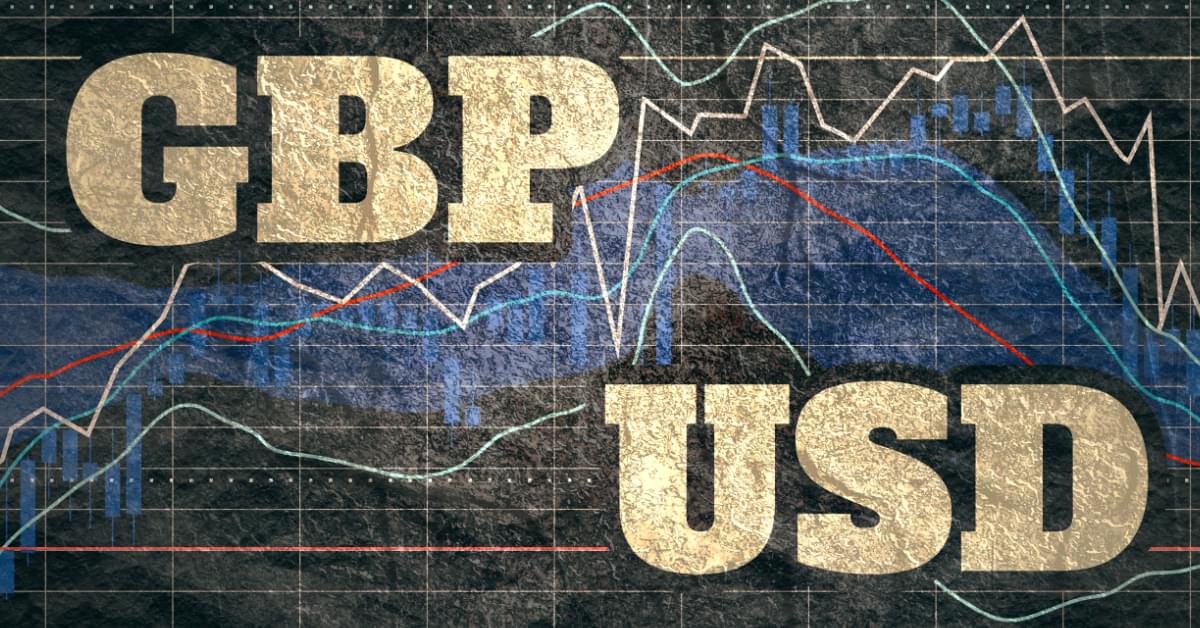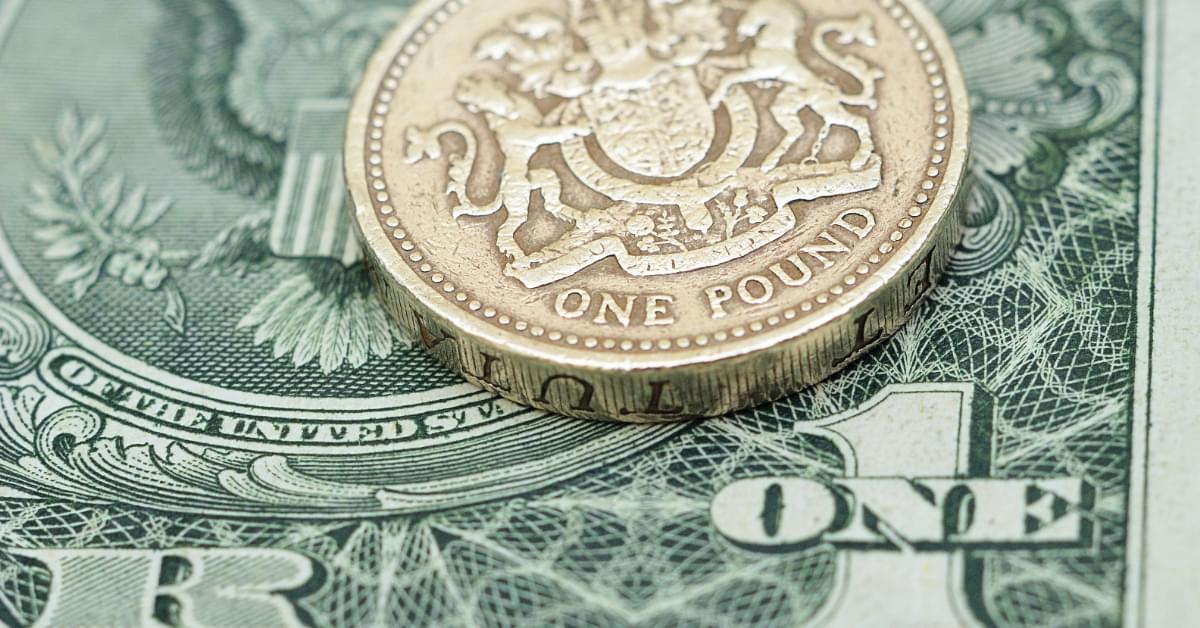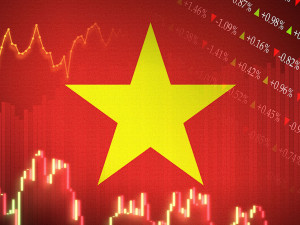
The British pound (GBP) is the oldest currency in the world and has been in continuous use since its inception around the year 800. It is currently the sixth-strongest currency in the world.
The United States dollar (USD) has been around since 1785 upon its introduction and implementation by the Founding Fathers. The currency was based on the Spanish silver dollar, which was used in the North American colonies as part of the Kingdom of Great Britain. After independence, Congress passed the Coinage Act of 1792, which officially established the US dollar as the new standard currency. The US dollar is currently the ninth-strongest currency in the world.
Due to Britain and the US being linked by language, diplomacies, and also both becoming leading economies, the US and UK economies have always been unofficially linked.
The exchange rate has been gradually aligning, but historically GBP has always been more valuable. We cover the history of the exchange rate between the two currencies, and explain at each moment what caused the shift.

First exchange rates
The oldest currency pair that is still traded to this day is GBP and USD, and is known colloquially as ‘trading the cable’. This is because the term ‘cable’ originated from when the exchange rate between the two countries was communicated across the Atlantic Ocean via telegraph cables.
After the US settled and began to form its own identity as a nation in the 1800s, the exchange rate of USD/GBP had an average of around 5:1. Due to the chaos of the Civil War, the dollar tumbled, and the exchange rate hit around 10:1.
Gold standard era
By the turn of the century, both the UK and the US economies were using the gold standard to regulate their currencies. In 1900, the exchange rate between the pound and the dollar was set at £1 = $4.86. This rate remained relatively stable, until the First World War when the pound’s value plummeted after confidence in the UK economy was lost.
20th century
After the First World War, the exchange rate between the two currencies began to fluctuate as the two economies went through significant changes. As the exchange rate began to draw closer (the exchange rate reached £1 = $3.40 in the early 1920s), the Great Depression hit, causing the dollar to weaken back to around £1 = $5.
The Bretton Woods System
In 1939, when the Second World War broke out, the borrowing costs of the UK reached new highs, and it was agreed that the pound would be fixed to the dollar at a rate of $4.03 to control the UK economy.
The Second World War caused significant economic damage globally, but the US emerged from it relatively unscathed, meaning that there was an opportunity to not only aid the world economies but form a subtle hegemony.
With the war drawing to a close, the Bretton Woods system was established in 1944 aiming to bring stability to the world economy. In this system, it was agreed that all nations in the agreement would have their currencies fixed to the price of the dollar, and the dollar itself would be fixed to gold. Under this system, the pound was further devalued, and the exchange rate settled with the pound worth $2.80 in 1949.
As we covered in our article on the gold standard, the Bretton Woods system worked in theory, but in practice, proved a little rocky. Due to fears that the gold reserves would be depleted, the US ended the system abruptly in 1971. This meant that the US dollar and all currencies in the agreement became free-floating fiat currencies overnight.
Floating exchange rates
From 1971, the exchange fluctuated wildly, reaching a high of $2.64 on 6th March 1972 in the aftermath of Nixon Shock. But in the following decade, the pound dropped to an all-time low of $1.05 in 1985 due to economic trouble in the UK, primarily due to the miners’ strikes, as well as financial deregulation in the US boosting the dollar.
After a strong recovery from this low, the pound crashed again in 1992, due to Black Wednesday. The pound then fell to $1.75 within a month, and took only five months to drop further to $1.40.
The Great Recession
The Great Recession of 2008 caused another blow to the pound. The American economy was affected greatly by the Great Recession, but global confidence returned quickly, despite these issues causing ripples that affected the entire world economy. The UK economy went into a recession in 2009, with the UK’s GDP falling by 2.6% just in Q1 of 2009, and by March, the pound had hit a new low of $1.37.
Despite the pound weathering the storm and bouncing back, it was hit with another weakening as the Greek debt crisis hit in 2009, which not only devalued the pound but actually caused the dollar to strengthen. This was because, during the economic uncertainty of the euro and Europe’s economy, the US dollar and US treasury bonds had a much stronger appeal as an economic safe haven.
Despite this second slump, the pound recovered again and managed to reach an exchange rate of around $1.55-65 to the pound.
Brexit & Covid-19
Unsurprisingly, Brexit significantly affected the GBP/USD exchange rate as well as the UK economy.
As the fears of a No-Deal Brexit increased in 2019, the pound weakened, and after the vote to leave, the pound suffered a significant drop, falling around 13% against the dollar in the two weeks following the Brexit referendum. This caused the pound’s value to drop from $1.47 to $1.29, hovering at around $1.32 in the following months.
Current Price
The current exchange rate at the time of writing is £1 to $1.30. This is relatively low for the pound, but a strong recovery considering the low of $1.08 in 2022 as the UK suffered from high inflation and narrowly avoided a recession. The exchange rate continues to fluctuate as recession fears are still around.

Timeline of GBP/USD exchange rate
1900: Exchange rate fixed at £1 = $4.86
1920s: Exchange rate at around £1 = $3.40
1930s: Great Depression caused dollar to drop to around 5:1
1939: Exchange rate of pound fixed at $4.03 to handle wartime borrowing from the US
1949: Aftermath of Second World War and Bretton Woods agreement, exchange rate £1= $2.80
1971: Bretton Woods agreement terminated, both GBP and USD floating currencies
1972: Aftermath of Nixon Shock sees an improvement in the pound, reaching £1 = $2.60
1985: Economic turmoil in the UK sees an all-time low of £1 = $1.05
1992: A recovery of the UK economy saw an exchange rate of £1 = $2
1992: The Pound sterling crisis in the same year caused the pound to fall to £1 = $1.40
2009: Great Recession aftermath caused the pound to slip to $1.37
2020: Slump due to Brexit caused the pound to drop to $1.29
2022: High inflation fears in the UK caused the exchange rate to reach £1 = $1.08
2023: Economic recovery sees the current rate at £1 = $1.30
If you’re considering exchanging pounds and dollars, CurrencyTransfer makes the money transfer effortless for you. Sign up to create your account, and you’ll get an allocated account manager to assist you with your personal and business payments.
Caleb Hinton
Caleb is a writer specialising in financial copy. He has a background in copywriting, banking, digital wallets, and SEO – and enjoys writing in his spare time too, as well as language learning, chess and investing.



